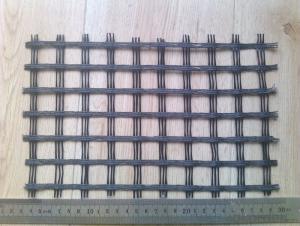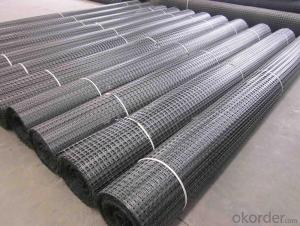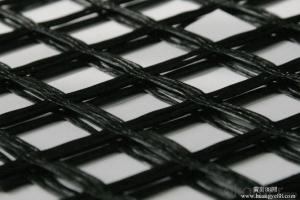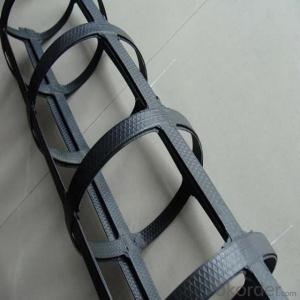Tensar Biaxial Bx Geogrids Plastic Blind Ditch/Permeable Hard Geotube
- Loading Port:
- Qingdao
- Payment Terms:
- TT OR LC
- Min Order Qty:
- 1000 m
- Supply Capability:
- 150000 m/month
OKorder Service Pledge
OKorder Financial Service
You Might Also Like
Packaging & Delivery
| Packaging Detail: | standard packing or according to client's request |
| Delivery Detail: | 15 days after receiving T/T |
Geocomposite drain pipe technical datas
Item | Square shape | Circular shape | |||||||||
Type | YA7030 | YA1235 | YA1550 | YB60 | YB80 | YB100 | YB150 | YB200 | YB250 | YB300 | |
Outer size(mm) | 70x30 | 120x35 | 120x50 | φ60 | φ80 | φ100 | φ150 | φ200 | φ250 | φ300 | |
Cannular size (mm)≥ | 40x10 | 40x10x2 | 40x20x2 | φ25 | φ45 | φ55 | φ80 | φ120 | φ170 | φ220 | |
Voidage (%)≥ | 70 | ||||||||||
Compress strength (kPa) | Flattening 5% | 70 | 60 | 50 | 85 | 80 | 70 | 50 | 40 | 35 | 30 |
Flattening 10% | 110 | 110 | 70 | 170 | 160 | 140 | 70 | 60 | 55 | 50 | |
Flattening 15% | 150 | 130 | 125 | 220 | 200 | 180 | 100 | 90 | 80 | 70 | |
Flattening 20% | 190 | 180 | 160 | 280 | 250 | 220 | 125 | 120 | 110 | 100 | |
plastic blind ditch
is made of plastic core and outer filtering cloth. In the state of hot melting, it is formed into three-D network structure. It has two shapes: rectangle and round. This kind of pipe has some advantages: good drainage, high pressure resistance, light weight, so it is very popular in some projects.Application:Highway and roadway subgrade,Retaining wall,Landfill,Roof garden,Building foundation,Underground irrigation.
- Q: Can geogrids be used in shoreline erosion control projects?
- Yes, geogrids can be used in shoreline erosion control projects. Geogrids are commonly used in these projects to stabilize the soil and prevent erosion by reinforcing the shoreline and providing structural support. They can effectively control erosion and protect the shoreline from further degradation.
- Q: Should the municipal geogrid be included in the area of overlap, and, if necessary, the proportion of the area to be included?
- Because the quota has been included in the lap
- Q: Are geogrids suitable for use in soil reinforcement for pipeline crossings?
- Yes, geogrids are suitable for use in soil reinforcement for pipeline crossings. They provide effective reinforcement by distributing loads and improving soil stability, reducing the risk of settlement or failure. Geogrids are designed to withstand high tensile forces and can enhance the performance and longevity of pipeline installations in various soil conditions.
- Q: What is the typical cost of a geogrid roll?
- The typical cost of a geogrid roll can vary depending on the size, material, and brand. However, on average, geogrid rolls can range in cost from $100 to $500.
- Q: Can geogrids be used for load distribution?
- Yes, geogrids can be used for load distribution. Geogrids are specifically designed to distribute loads over a wider area, improving the stability and strength of various structures such as roads, retaining walls, and embankments. They help to spread the applied load more evenly, reducing the potential for localized stress and preventing the formation of cracks or failures.
- Q: Are geogrids suitable for use in reinforced soil slopes?
- Yes, geogrids are suitable for use in reinforced soil slopes. Geogrids provide stability and reinforcement to the soil, preventing erosion and slope failure. They enhance the strength and load-bearing capacity of the soil, making them an effective solution for reinforced soil slopes.
- Q: Geogrid tgsg50-50 what does it mean
- That is, pull, 45KN, I am a manufacturer, geogrid TGSG45-45, two-way plastic geogrid 45KN, I hope to help you.
- Q: Are geogrids suitable for use in slope reinforcement during excavation?
- Yes, geogrids are suitable for use in slope reinforcement during excavation. Geogrids provide stability and reinforcement to slopes by distributing the load and preventing soil erosion. They are effective in strengthening the slope, reducing the risk of landslides, and improving overall safety during excavation operations.
- Q: How to determine the number of geogrid detection method
- What are the geogrid testing items1) place: in the surface layer of 50cm thick sand gravel or sand (egg) gravel cushion, and compaction, which is not only conducive to improve the friction between the soil and the grid, but also conducive to the consolidation of the foundation drainage.
- Q: Geogrid test items: what is the point of the joint point of penetration
- The conventional test items of geogrid are tensile strength, elongation, and welding point peeling force.
Send your message to us
Tensar Biaxial Bx Geogrids Plastic Blind Ditch/Permeable Hard Geotube
- Loading Port:
- Qingdao
- Payment Terms:
- TT OR LC
- Min Order Qty:
- 1000 m
- Supply Capability:
- 150000 m/month
OKorder Service Pledge
OKorder Financial Service
Similar products
Hot products
Hot Searches
Related keywords




























